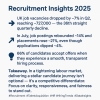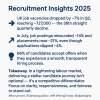
Two-fifths (40%) of global organisations have failed to include employees in decision-making around remote-working policies, resulting in a disconnect with staff preferences, according to research conducted by workplace experience business ISS.
Its research surveyed 100 real estate and facilities management professionals within global organisations in a range of industries, including international banks and professional services firms, representing an estimated million-plus office-based employees.
The most common approach among global employers was to offer a maximum of two remote working days per week, at 35%, but more than half of respondents felt their policy was out of step with employee preferences. By implementing top-down policies, the research found that employers were generally experiencing office occupancy levels of between 50% and 70%, in line with pre-pandemic norms.
However, only 41% of respondents felt that their organisation had a policy that aligned with staff preferences, with 32% suggesting that employees would prefer to work from home more than their employer currently allows.
Ulla Riber, head of group workplace management at ISS, said: “The new mandate of employers is to meet or exceed employee expectations in ways that cater to the productivity needs of both employees and the company. It is not a question of ‘if’ people are in the office; it is a question of ‘how’ they can best thrive, innovate, and collaborate at work. So more businesses would benefit from including employees in the decision-making around their workplace and ways of working.
“Finally, employee engagement is not the responsibility of one single team; leaders who have responsibility for HR, technology, facilities management and corporate real estate must join forces. We have a golden opportunity right now to create a future proof workplace, and we need to grab it with both hands.”









